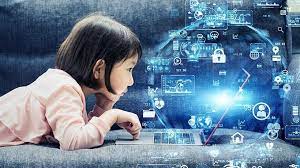Publish Sunday, 9 June 2024
In an era defined by rapid technological advancements and ever-expanding access to information, the integration of research and technology has become increasingly essential in education. From K-12 classrooms to higher education institutions, educators are leveraging research-based practices and cutting-edge technologies to enhance teaching and learning experiences. In this article, we explore the significance of enhanced research and technology education, its benefits, and strategies for effective implementation across diverse educational settings.
1. The Importance of Research and Technology Integration
Research and technology integration in education play a pivotal role in preparing students for success in the 21st century. By incorporating evidence-based practices and leveraging innovative tools and resources, educators can create dynamic learning environments that foster critical thinking, problem-solving, collaboration, and creativity. Research and technology integration enable students to engage with content in meaningful ways, develop essential skills, and become lifelong learners equipped to thrive in an increasingly complex and interconnected world.
2. Benefits of Enhanced Research and Technology Education
Enhanced research and technology education offers numerous benefits for students, educators, and educational institutions:
- Improved Learning Outcomes: Research-based instructional strategies and technology-enhanced learning activities have been shown to improve student achievement, engagement, and retention of content knowledge.
- Personalized Learning: Technology tools and resources enable educators to personalize instruction to meet the diverse needs, interests, and learning styles of individual students, promoting greater autonomy and self-directed learning.
- Enhanced Collaboration: Digital platforms and online collaboration tools facilitate communication and collaboration among students, enabling them to work together on projects, share ideas, and solve problems collaboratively.
- Access to Resources: Technology integration expands access to a wealth of educational resources, including digital libraries, multimedia resources, virtual simulations, and online databases, providing students with opportunities for deeper exploration and research.
- Global Connectivity: Technology enables students to connect with peers, experts, and resources from around the world, fostering global awareness, cultural competence, and cross-cultural communication skills.
3. Strategies for Effective Implementation
Implementing enhanced research and technology education requires thoughtful planning, collaboration, and ongoing support. Here are some strategies for effective implementation:
- Professional Development: Provide educators with opportunities for professional development and training in research-based instructional strategies, technology integration, and digital literacy skills.
- Curriculum Design: Design curriculum and learning experiences that integrate research-based practices and technology tools seamlessly, aligning with learning objectives, standards, and assessment criteria.
- Technology Infrastructure: Ensure access to reliable technology infrastructure, including high-speed internet, devices, software, and technical support, to support technology-enhanced learning experiences.
- Pedagogical Support: Offer pedagogical support and guidance to educators in designing and implementing technology-enhanced learning activities that promote active learning, inquiry, and collaboration.
- Assessment and Feedback: Implement formative assessment strategies to monitor student progress, provide timely feedback, and guide instructional adjustments based on student needs and performance data.
4. Examples of Research and Technology Integration
Research and technology integration can take many forms across different educational settings:
- Flipped Classroom: In a flipped classroom model, students engage with instructional content independently outside of class, using technology tools such as video lectures or interactive multimedia resources, freeing up class time for hands-on activities, discussions, and collaborative projects.
- Project-Based Learning: In project-based learning, students work on authentic, real-world projects that require research, critical thinking, problem-solving, and collaboration, leveraging technology tools and resources to conduct research, gather data, and present findings.
- Virtual Laboratories: Virtual laboratories simulate real-world laboratory experiences, allowing students to conduct experiments, analyze data, and explore scientific concepts in a safe and controlled environment, supplementing traditional hands-on laboratory experiences.
- Online Learning Platforms: Online learning platforms provide access to interactive courses, digital resources, and multimedia materials, enabling students to engage in self-paced learning, collaborate with peers, and receive personalized feedback from instructors.
5. Conclusion
Enhanced research and technology education holds tremendous potential to transform teaching and learning experiences, empower students, and prepare them for success in the digital age. By integrating research-based practices and cutting-edge technologies into educational settings, educators can create dynamic, engaging, and personalized learning environments that meet the diverse needs and aspirations of 21st-century learners. As technology continues to evolve and new research emerges, the possibilities for enhancing education through research and technology integration are limitless, driving innovation, creativity, and excellence in education for generations to come.
